
23 Oct AY’s Principles of Practice
In AY, we believe that living in an awake way requires working from the inside out on a path of self-transformation. As we study ourselves through the lens of various wisdom perspectives—Yogic, Buddhist, Taoist, depth psychology—and apply holistic methods to an examined life, we become the artistic visionaries of our own existence. With compassion as our compass, no area of our human experience needs to be censored from scrutiny, as eventually everything within us that is unintegrated and hiding in the shadows of our psyche will need to be exposed to the light of our awareness.
Motivated by the humble aspiration to hold and heal all aspects of ourselves, we learn we can sincerely become our own best friend, naturally growing into a trusted touchstone for others. As we learn to hold and heal aspects of our own wounded psyche, we often will seamlessly find more capacity to skillfully and empathically relate to others in a more positive wholesome manner. In this way, our inner work becomes the essential ground of support for extending that healing to our relationships and communities. As we enliven our inner worlds, we may also discover we are cultivating cleaner, higher-vibrational energy to devote to the protection of this fragile planet and all of its creatures. The further we go with love and care, the more capacity we will see for compassionate action outward in all that we do.
Below are AY’s Principles of Practice:
I. A Balancing Practice
Most of us are in varying states of imbalance, and what we require is not a balanced practice but a balancing practice. We require a practice that balances us, not itself.
In AY Basics, students will learn how to create an appropriate practice for them using breath, intention and method, and later on, can choose which AY practice will balance them on any given day.
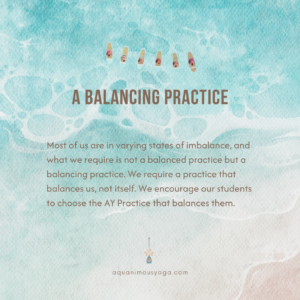
II. A Holistic Practice
In AY, we view the self as coexisting on five levels of experience, and we work on each one of them interdependently: physical, energetic, emotional/mental, interpersonal and causal (consciousness).
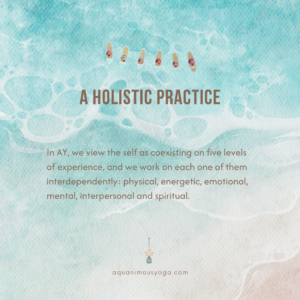
III. A Functional Practice
In AY, we prioritize understanding and valuing each individual’s unique anatomy. By providing function-oriented guidance, we aim to educate practitioners on choosing movements and postures that best suit their specific needs.
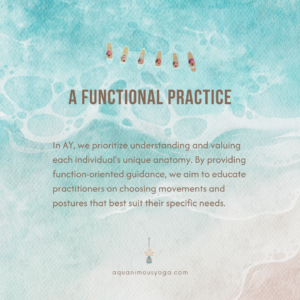
VI. A Somatic Practice
In AY, we emphasize self-perception and internal experience over aesthetics and alignment in order to balance and be embodied. The movements are slow and conscious, focusing completely on the internal response and sensations of the body while doing the postures on the board.
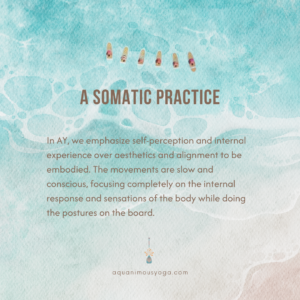
V. A Spiritual Practice
In AY, we see spirituality as incorporating some kind of inner transformation, whereby a practitioner gains a higher sense of clarity, insight and peace, bringing in turn a greater feeling of freedom and connection.
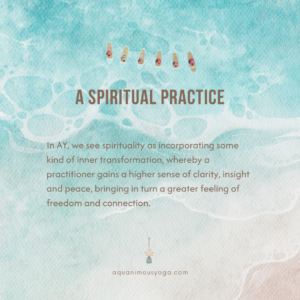

No Comments